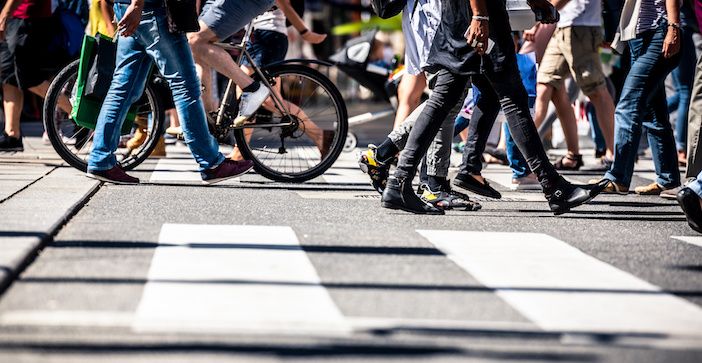TTi columnist, independent consultant and human factors expert Professor Nick Reed, discusses the power of language and how simply reclassifying vulnerable road users could lead to transportation safety benefits for all.
Anyone with anything more than a passing interest in road safety will be aware of the abbreviation VRU as the shortened form for vulnerable road users. This classification includes pedestrians, cyclists, motorcyclists, horse riders and users of new forms of mobility such as e-scooters. It reflects their relative lack of protection when compared to occupants of a motor vehicle in the event of a collision.
 However, although the phrase may accurately reflect VRUs’ relative level of susceptibility to injury, I don’t believe that it accurately reflects how members of the public feel about their transport experiences. Someone going about their daily routine, walking to school, or cycling to the train station probably doesn’t consider themselves to be unduly at risk.
However, although the phrase may accurately reflect VRUs’ relative level of susceptibility to injury, I don’t believe that it accurately reflects how members of the public feel about their transport experiences. Someone going about their daily routine, walking to school, or cycling to the train station probably doesn’t consider themselves to be unduly at risk.
The implication of the term suggests an inherent weakness or deficiency on the part of the road user labeled as vulnerable and this may limit consideration of other factors that may have caused their increase in risk exposure, such as the behavior of other road users or poor infrastructure.
There is also a risk that bundling VRUs under this umbrella term results in ‘othering’ – the marginalization of a group whose shared identity is considered outside the mainstream. This is troubling as we are all vulnerable road users at some point in our day-to-day lives. But even if this weren’t the case, we could also question the extent to which VRUs have such a shared identity. The needs, abilities and experiences of motorcyclists, pedestrians and horse riders are very different and such labeling could diminish important elements of diversity across the various sub-groups of VRU.
This label may also underplay the vulnerability of vehicle occupants to injury. A study of the road users and vehicle types involved in fatal crashes in the UK in the 2019 by the Parliamentary Advisory Council for Transport Safety found that the number of VRU fatalities by distance traveled was indeed higher than that for occupants of motor vehicles. However, the absolute number of car occupants killed (736) was higher than the number of pedestrians (470), cyclists (100) or motorcyclists (336) – highlighting that it’s not just VRUs that are at risk.
“LABELING RISKS DIMINISHING IMPORTANT ELEMENTS OF DIVERSITY ACROSS THE VARIOUS SUB-GROUPS OF VRUs”
What alternatives can be considered? Some refer to occupants of enclosed motor vehicles as ‘protected road users’. This helps shift the emphasis away from the vulnerability of other road user types but suffers from the same issues of oversimplification and ‘othering’.
It seems the answer is to examine why we are choosing to group such road users together and consider whether that is appropriate in the circumstances – and if it is not appropriate then we must face up to the hard work of trying to understand road users, their modal choices, and their behaviors in all of their complexity. To quote the late author James Baldwin, “Not everything that is faced can be changed, but nothing can be changed until it is faced.”
Professor Nick Reed is founder and CEO of Reed Mobility
This article was originally published in the May 2023 edition of TTi magazine





